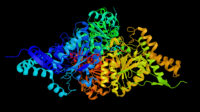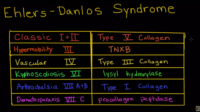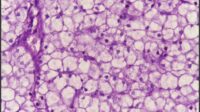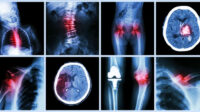How well do you know Glycogen Storage Diseases (GSD)? We’ve noticed this tends to be a difficult topic for our users that’s why we’ve asked our partners at MedCram to explain a Glycogen Storage Diseases practice question from our USMLE Step 1 and COMLEX Level 1 question banks in the past. Lucky for you, we asked MedCram’s Dr. Roger Seheult to explain another one of our Glycogen Storage Disease practice questions to make sure our users understand this topic really well since it comes up on multiple exams you’re sure to face. First, take a stab at the question and see if you can answer it correctly. Then, watch MedCram’s video explanation below and see if you got it right.
Glycogen Storage Diseases Practice Question
The Question: An 11-year-old boy complains of sore muscles, muscle cramps, and severe fatigue following exercise. Urinalysis shows myoglobinuria. Which of the following enzymes is this patient most likely deficient in?
A. α-1,6-glucosidase
B. Glucose-6-phosphatase
C. Hepatic glycogen phosphorylase
D. Lysosomal α-1,4-glucosidase
E. Myophosphorylase
Video Explanation
Correct Answer: (E) – Myophosphorylase.
Main Learning Point: This patient most likely has McArdle disease (type V). McArdle disease is a glycogen storage disease (GSD) and is inherited in an autosomal recessive manner. McArdle disease results from a deficiency in the enzyme myophosphorylase (also called muscle glycogen phosphorylase). This results in the inability of the muscle to metabolize glycogen to glucose. Therefore, during exercise, there is a lack of glucose for anaerobic glycolysis. The accumulation of glycogen results in a variety of clinical manifestations, such as exercise intolerance, severe muscle cramps, muscle swelling, weakness, and fatigue.
Explanations:
A. α-1,6-glucosidase (a glycogen debranching enzyme) deficiency is most commonly associated with Cori disease (type III). Cori disease is inherited in an autosomal recessive manner and is a milder form of type I (Von Gierke disease).
B. Glucose-6-phosphatase deficiency is most commonly associated with Von Gierke disease (type I). Von Gierke disease presents with severe fasting hypoglycemia, elevated blood lactate levels (lactic acidosis), hyperlipidemia, hyperuricemia (a predisposition for gout), and hepatomegaly.
C. Hepatic glycogen phosphorylase deficiency is most commonly associated with Hers (type VI) disease. Her disease presents with mild fasting hypoglycemia, growth retardation, hepatomegaly, and cirrhosis.
D. Lysosomal α-1,4-glucosidase deficiency is most commonly associated with Pompe disease (type II). Pompe disease predominantly presents with cardiomyopathy along with other systemic findings (e.g., liver, kidneys, etc.). Pompe disease generally results in death by 2 years of age.
Reference: 1. UpToDate, Post TW (Ed), UpToDate, Waltham, MA. (Accessed on July 13, 2014.) 2. First Aid 2014, p113
How did you do?
Did you get the answer right? Whether you answered the question correctly or not, we hope you learned something new from this video explanation. To insure a comprehensive understanding of this topic, check out our other video explanation on another Glycogen Storage Diseases practice question.
Want more free practice?
Studying with practice questions will help you build confidence and get a feel for what the exam is like. Sign up for a free trial of our USMLE Step 1 or COMLEX Level 1 question banks for more free practice questions.
Thanks for visiting. Take 10% off any BoardVitals Question Bank, use coupon code: QUIZ10 at checkout.




